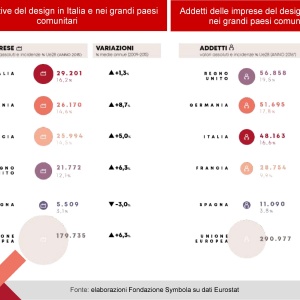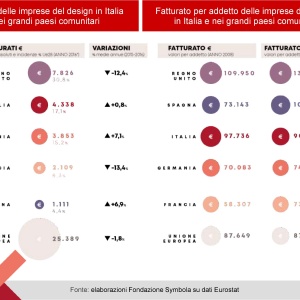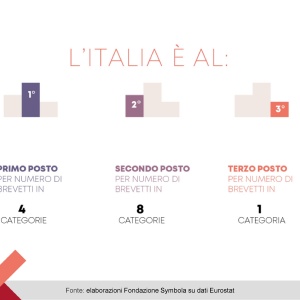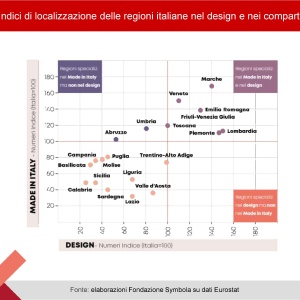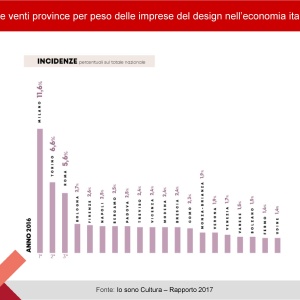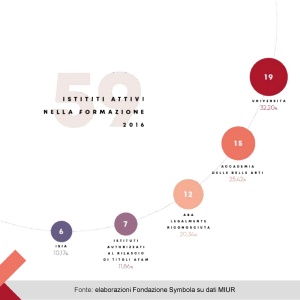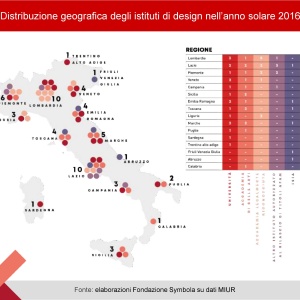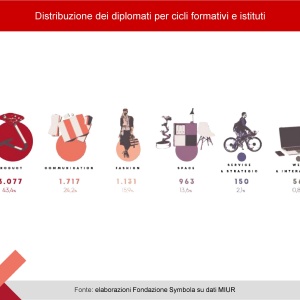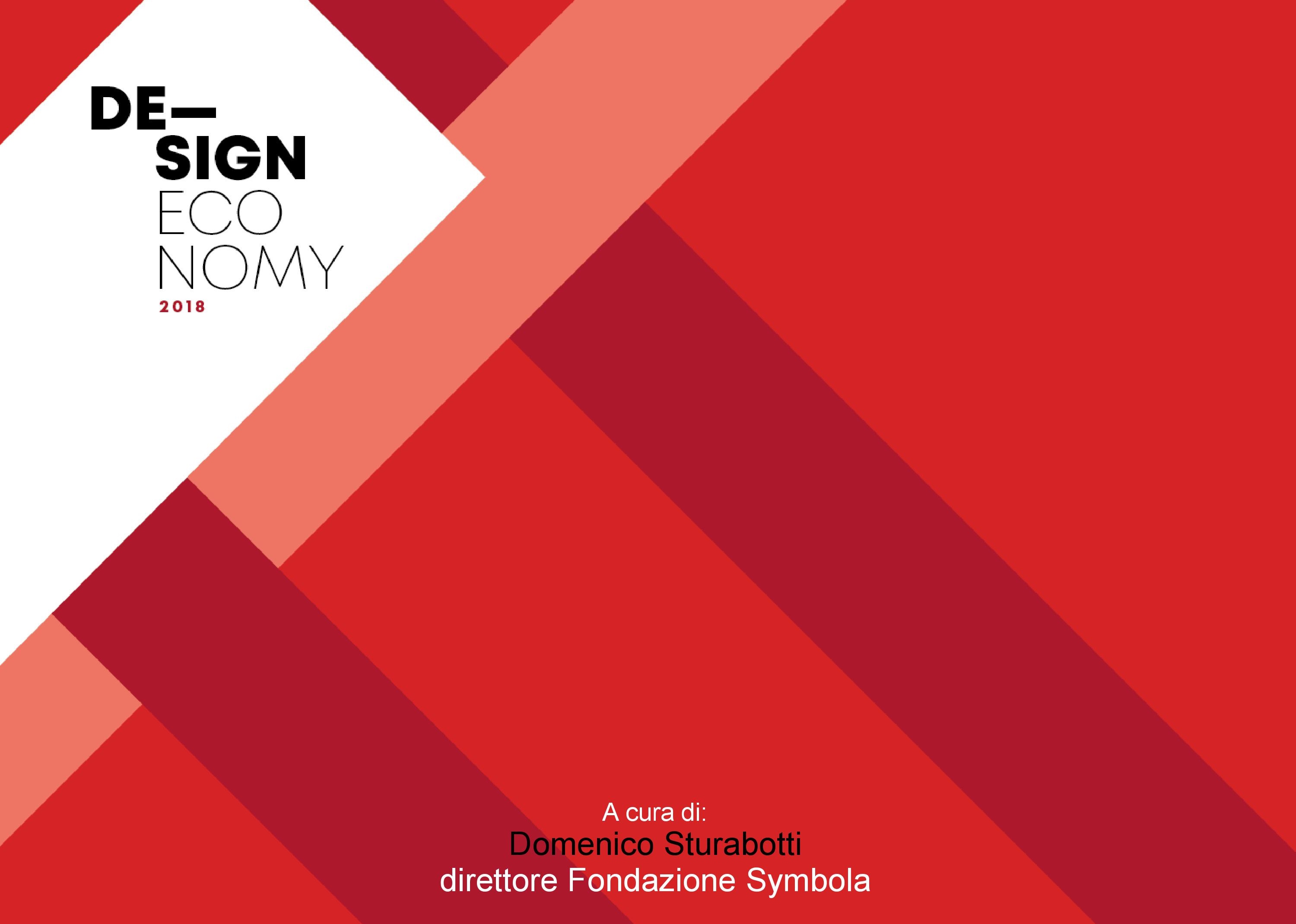
On March 2, at the age of 107, Gillo Dorfles left us, an exemplary witness of the events of Italian design, art and culture. This extraordinary observer of our times supported the need for design to be studied outside the specialist schools as well, because it is the basis of our way of life. Design pervades all areas of our lives and, like a seismograph, is able to record the changes taking place.
Through design it is possible to reconstruct the thoughts, needs, desires and all the fluctuations in taste that permeate society. But design is above all innovation. And those entrepreneurs who have built the characteristic trait of their brand on design are aware of this, just take a trip along the Peninsula. Through design, Italian companies have shaped their products by redefining their meaning, culturally characterizing them, making them different, strengthening their competitiveness and at the same time enriching a positive imagery of Italy.
And it is also thanks to these "cultural" products that Made in Italy is now the third most famous brand in the world, after Coca Cola and Visa. The Italian design system enjoys a competitive advantage linked to a training system spread throughout the territory with excellences. One of them is the Politecnico di Milano, which, thanks to 4000 students enrolled, a third of whom from abroad, ranked fifth this year in the world top 10 of QS World University Rankings by Subject in the Design area, first among public universities. But also companies that attract the best national and international designers are part of our excellence.
From the French Philippe Starck who for more than 20 years has chosen to lend his creativity to Italian brands that have become famous for their desire for internationalization, to a new generation of 40-45 year olds such as Patricia Urquiola, who is Spanish; the Bouroullec brothers, French; the Dutch Marcel Wanders; , the Japanese Tokujin Yoshioka; the Campana brothers, Brazilians; and the German Konstantin Grcic.
Unlike other industries, we import the best talent here in exchange for technology, efficiency and a wealth of manufacturing experience that can put ideas and projects into practice: we are good at "doing things". It's a heritage that we've always had, it's part of our culture and it fills our daily lives, thanks by a dense network of subjects and institutions such as the regional and interregional delegations of the ADI that have the dual function of spreading the design culture on the territory and bringing out at national level the design diffused in companies.
The centre of this system is the city of Milan. This is where 25% of the design companies are based. In Milan there is one of the highest concentrations of design schools in the world, which attracts international investment funds, such as the Galileo fund that recently acquired Marangoni, NABA and DOMUS, or the Raffles large group of Singapore with 26 colleges throughout Asia, which in the city of Milan opened its first European school. It is always here that we find the Triennale, model and point of reference - together with the Venice Biennale - for the more than 250 Biennal and Triennal exhibitions scattered throughout the world. Milan also welcomes the ADI, promoter, among other activities, of the prestigious Compasso d'Oro Award, which this year will open to the public the permanent collection of winning works; and the Salone del Mobile, pillar of the system, now in its 57th edition.
In addition to all this, since 2017 the Ministry of Foreign Affairs has been promoting itself in collaboration with all public and private actors representing quality Italian design through the "Italian design day" project. This initiative brings the culture of Italian design to the world every year, giving vigour to the national brand but also to our added value. According to Confindustria, in 2022 the 31 most advanced markets will import 70 billion euros of products with Italian design content from Italy, an increase of 20% compared to 2016.
It is in this overall cultural climate, which is fueled daily by the industrious work of quality manufacturing and service companies, excellent craftsmen, designers, leading specialist magazines, very active trade associations and prestigious museum institutions, that our unique and irreproducible design system resides.
In this system, analyzed in this report, more than 29 thousand design companies work, an European record, generating a turnover of 4.3 billion euros, equal to 0.3% of GDP. More than 48 thousand employees: 1/6 of the total European workforce. These figures have shown clear growth, especially in the last five years, in the midst of a crisis: +1.5% for employment and +3.6% for turnover.
Italy is among the top three countries in terms of number of design patents in 22 of the 32 aggregate categories provided for in the official Locarno classification. In fact, our country is first and second in terms of number of patents in 12 categories including food; musical instruments, textiles; travel goods, furniture; household goods and lighting equipment. As is evident, the numbers do not reflect the complexity of the design system, which is also made up of numerous uncoded innovations and numerous professionals who, working within companies operating in other sectors, spread their skills and permeate the economic fabric of the country in other areas.
The information framework of the document is completed by an analysis of schools and training institutes, dedicated to those who are entering the world of design. The first figure that emerges is the growth in the number of design students: in the calendar year 2016, there are 7094 design professionals graduating from the training institutes recognized by the Italian Ministry for Education, University and Research. This figure is up by 9% compared to 2014, especially in Lombardy, Piedmont and Lazio, which together make up more than two thirds of all Italian designers.
A sector that today is called upon to respond to the challenges of the times, first and foremost the environmental one. Called upon to interpret the relationship between design and environmental technologies better and with greater sensitivity, with the awareness that perhaps we are at the beginning of a new period, characterized by research and experimentation with new languages. A clue in this direction is the growth of investments in green technologies: there are 355 thousand Italian companies in industry and services with employees who invested in the period 2011-2016. The need to face the challenge of the green economy offers the design sector the possibility to rethink the contemporary production panorama and to give greater vigor to our Made in Italy.
Due to the specific nature of this sector and the important role it plays for the country, since 2017 Fondazione Symbola has been promoting a study on the economy of design, focusing its attention in particular on the contribution that the sector makes to the Italian economy. It is in Italy, in fact, that the craft tradition and innovation, the local dimension and international scope, quality, green economy and beauty can fully meet. Design, understood as "project culture", is one of the best business cards that our country can show to the world. Here, where companies grow thanks to the wisdom of the territories, to the communities, to their knowledge and to their cohesion, design is a real intangible infrastructure of Made in Italy, emblem of an Italy that makes Italy, not denying itself, but looking for the lifeblood to face the challenges of the future.




